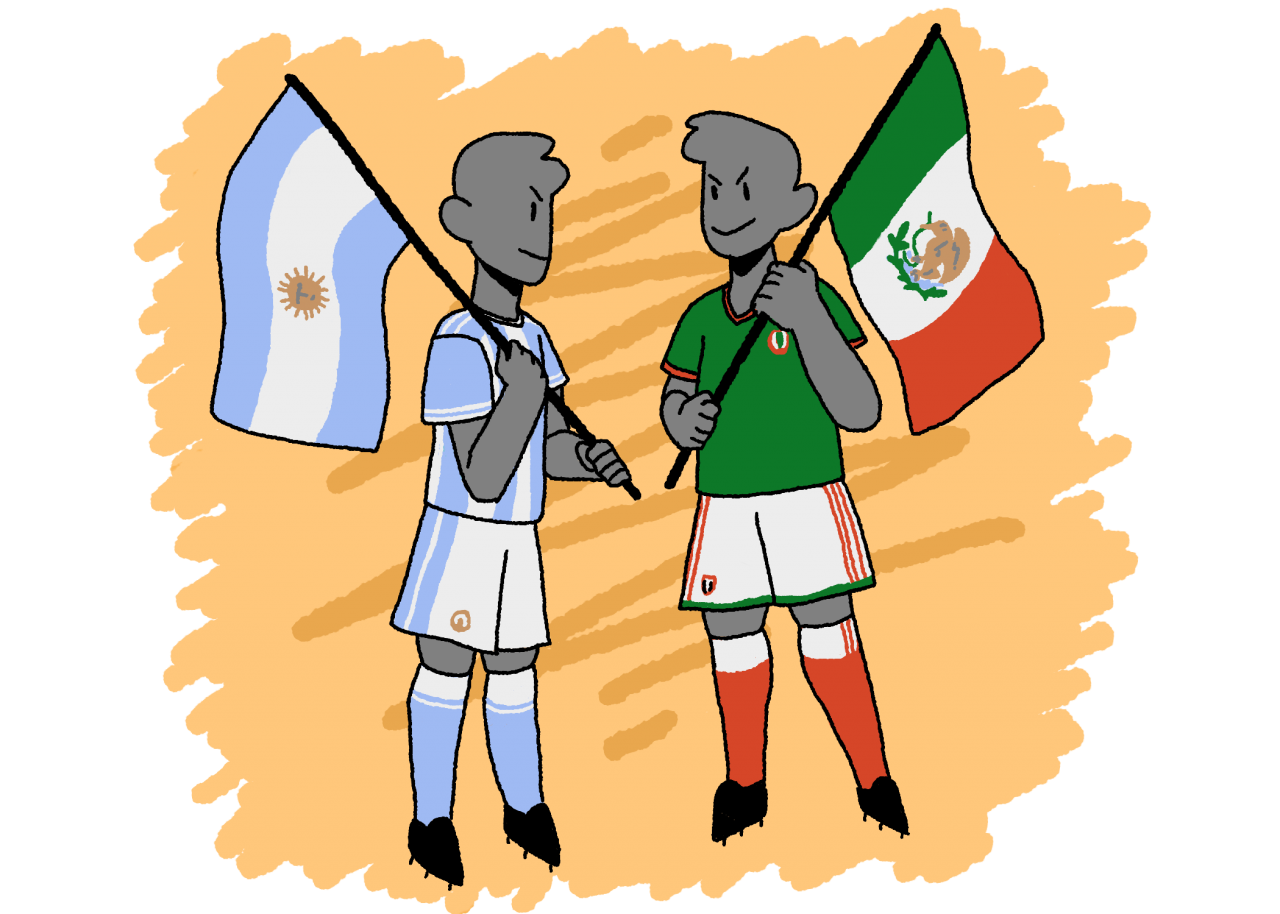Illustration by Ren Rader
On Tuesday, Sept. 10, the Mexican Football Federation hosted Argentina for a friendly match. One might expect Mexico to host games at Estadio Azteca in Mexico City, but instead, 56,511 fans, mostly repping “El Tri,” packed the Alamodome in San Antonio to watch Argentina crush Mexico 4–0 in Mexico’s home away from home.
The loss came in Mexico’s fifth game at the Alamodome in the last five years and was part of Mexico’s U.S. tour, which saw them visit other major American cities such as San Diego, Dallas and Atlanta this past year.
It is an interesting concept for Mexico to continually play in American cities. The team has taken advantage of the large Mexican-American population in many of the largest cities in the United States to keep growing its domination of the U.S. Men’s National Team both on the field and in the stands. On the same night that the announced attendance was 56,511 in the Alamodome, the United States brought in only 20,625 vs. Uruguay in St. Louis, Missouri (ESPN). Mexico is significantly outdrawing the U.S. on its own turf. On the field, Mexico defeated the U.S. earlier this month in a friendly at MetLife Stadium in New Jersey. Just this July, Mexico beat the U.S. in the Gold Cup Final, the major tournament among teams that are a part of the Confederation of North, Central American and Caribbean Association Football (CONCACAF). At the moment, the big North American rivalry is clearly swinging south.
For San Antonio, every time Mexico comes is a chance to prove itself as a potential host city for even bigger events, especially within the soccer world. While Mexico’s most recent matches in South Texas have been friendlies, Mexico did play Curaçao in the 2017 CONCACAF Gold Cup. Drawing big crowds consistently acts as a reminder that San Antonio will show up for major games and will hopefully continue to place the Alamo City on the sports radar.
The Alamodome also continues to display its versatility when it comes to hosting events for a variety of sports. Along with the big soccer crowds, the Alamodome took in 136,088 fans in March of 2018 for the National Collegiate Athletic Association Men’s College Basketball Final Four (NCAA).
Every fall the University of Texas-San Antonio plays its home football games in the Alamodome, and in late December, the Valero Alamo Bowl, an increasingly significant game in terms of the ranking of participating teams, brings two Power Five college football teams to the Alamodome. For five years, the Alamodome even became a baseball stadium for the Texas Rangers’ Big League Weekend exhibition games.
Despite its versatility and ability to keep up somewhat with the pace of newer stadiums, the Alamodome’s initial promise to be a host for a National Football League team remains broken. The closest the city ever came to landing a franchise was in the aftermath of Hurricane Katrina when the New Orleans Saints played three regular season games at the Alamodome. Owner Tom Benson nearly moved the team permanently, but the city of New Orleans managed to keep their beloved Saints. Since then, San Antonio has been at the center of many relocation talks, most notably with Oakland Raiders owner Mark Davis. Davis reportedly toured potential stadium locations in the Alamo City, but ultimately the Raiders turned down the Riverwalk for the Las Vegas Strip.
One might think San Antonio’s knack for showing up for Mexico’s games would impress Major League Soccer (MLS) enough to reward the city with a franchise of its own. Currently, San Antonio FC plays in the United Soccer League, a professional league that is under the hierarchy of MLS. In the past few years, MLS has sought to expand, and 12 American cities placed bids for a new team, including San Antonio. It was expected for MLS to give teams to four new cities to reach 28 franchises in total. San Antonio seemed to be squarely in the running when Austin snatched up a franchise out of nowhere despite not even putting in an initial bid. Once again San Antonio came so close yet so far to getting a second major professional franchise.
San Antonio is hungry for another sports franchise, but as of now, the city is still waiting. Until a pro league finally decides to place a team in San Antonio, the Mexican National Team is about as close as San Antonio can come to a second home team. For Mexico, that seems to be quite alright as long as green, white and red continue to fill the stands.





